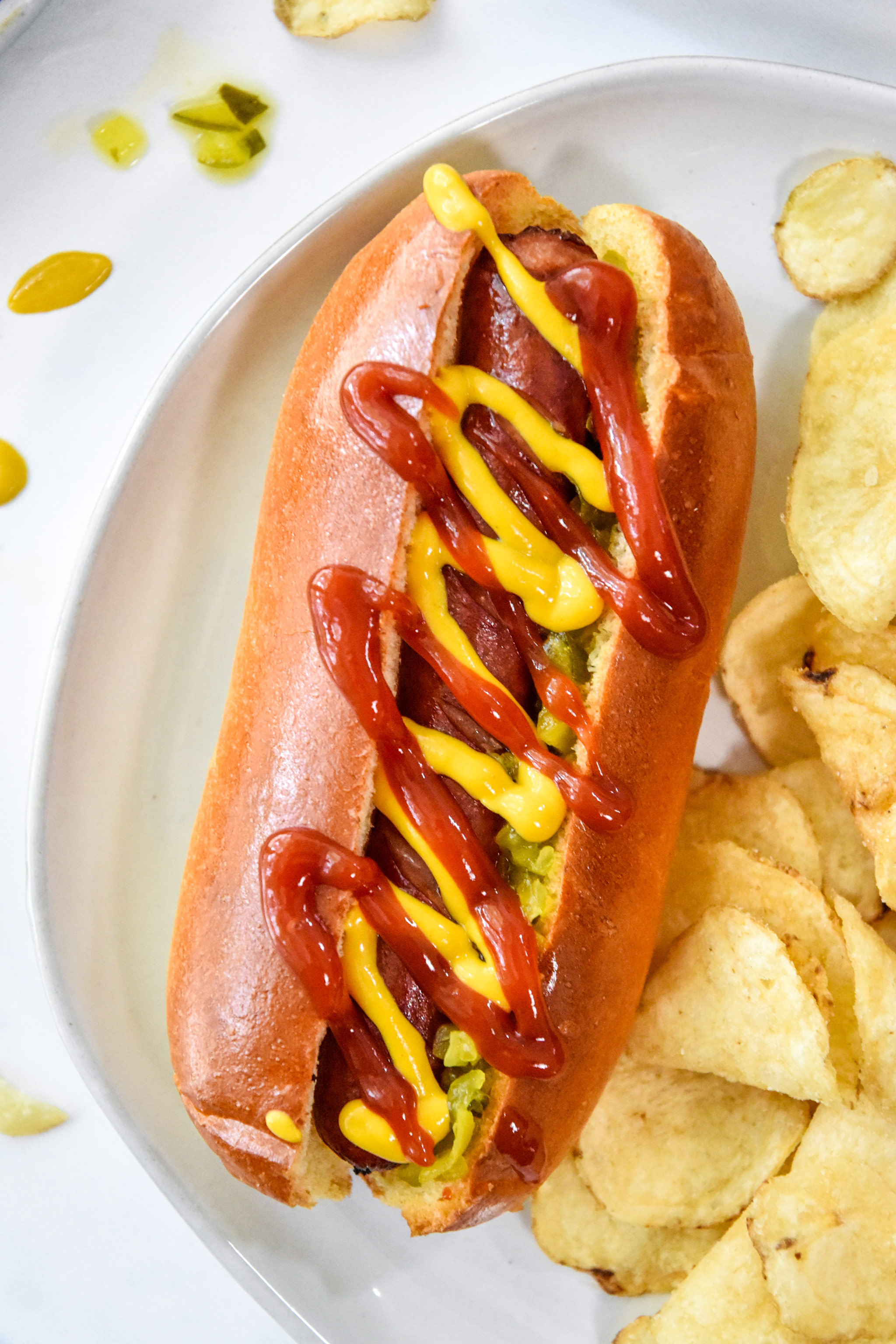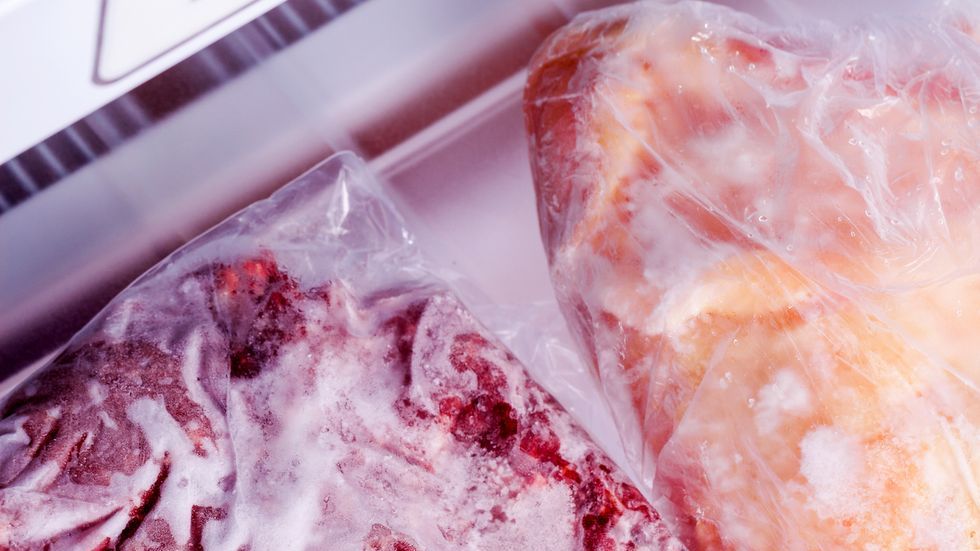Hotdogs can be refrozen as long as they have been properly thawed and handled. Hotdogs can be refrozen safely after thawing if handled and stored correctly.
When thawing hotdogs, it is important to defrost them in the refrigerator rather than at room temperature to prevent bacterial growth. Once fully thawed, hotdogs can be refrozen if desired, but it is recommended to use them within one to two months for optimal taste and quality.
To refreeze hotdogs, make sure to place them in airtight freezer bags or containers, removing as much air as possible to prevent freezer burn. Label the packaging with the date to keep track of freshness. Proper handling and storage ensure that hotdogs can be safely refrozen for later consumption.
Myth Vs Reality
Hotdogs can indeed be refrozen, debunking the long-standing belief that once they have been thawed, they are no longer suitable for freezing. This common misconception surrounding the freezing process of hotdogs has often led to unnecessary food waste. Contrary to popular belief, freezing hotdogs is a perfectly safe and effective way to extend their shelf life.
When hotdogs are properly stored in an airtight container or freezer bag, they can be safely refrozen without compromising their taste or quality. By understanding the truth behind freezing hotdogs, we can make better use of our leftovers and reduce unnecessary food waste.
So the next time you find yourself with thawed hotdogs, feel free to refreeze them and enjoy their deliciousness at a later time.
Understanding Food Safety
Hotdogs can be refrozen if they have been thawed in the refrigerator and not left out at room temperature for more than two hours. Understanding food safety is important to prevent the risk of foodborne illnesses. The fundamentals of food safety include proper storage practices.
Key guidelines for safe food preservation can help minimize the chances of contamination. It is crucial to store perishable items like hotdogs in airtight containers or freezer bags to maintain quality and prevent microbial growth. Labeling and dating the packages can also help in keeping track of the storage time.
By following these guidelines, you can safely refreeze hotdogs and enjoy them later without compromising food safety. Remember to always practice caution when it comes to food storage and handling to protect yourself and your loved ones.
Debunking The Hotdog Re-Freezing Debate
Hotdogs can be refrozen without causing harm or foodborne illnesses if done correctly. The debate surrounding re-freezing hotdogs often raises concerns about safety and quality. However, understanding the impact of temperature fluctuations is crucial in debunking these misconceptions. It’s essential to handle hotdogs properly to prevent any potential risks.
When thawing and re-freezing, ensure that the hotdogs are kept at a safe temperature to avoid bacterial growth. Freezing hotdogs immediately after purchase maintains their freshness and flavor. While it’s generally recommended to consume hotdogs within a few months, re-freezing can be an option if handled correctly.
By following proper food handling guidelines, you can enjoy hotdogs safely and with peace of mind. Understanding the truth about re-freezing hotdogs helps ensure a delicious and worry-free meal.
Proper Handling And Storage
Can hotdogs be refrozen? Proper handling and storage are crucial in maintaining the quality of hotdogs. Storing hotdogs correctly plays a key role in their longevity. Identifying ideal storage conditions is essential – they should be kept in the refrigerator below 40°F (4°C).
Tips for extending hotdog shelf life include sealing them tightly in an airtight container or freezer bag. Separate them into smaller portions to avoid thawing more than you need. Additionally, label and date the packaging to keep track of their freshness.
By following these guidelines, you can ensure that your hotdogs are safe to consume even after refreezing. So, next time you have leftover hotdogs, store them properly for future use.
How To Re-Freeze Hotdogs Safely
Hotdogs can be refrozen, but it’s important to follow proper guidelines to ensure safety. First, make sure the hotdogs have been handled safely and stored at the correct temperature. Before refreezing, check for any signs of spoilage such as an off smell or slimy texture.
If the hotdogs are still in good condition, you can proceed with the re-freezing process. It’s crucial to divide the hotdogs into smaller portions to allow for quicker and more even freezing. Use airtight packaging to prevent freezer burn and maintain the freshness.
Label the packaging with the date to keep track of its shelf life. Finally, when it comes time to thaw and use the refrozen hotdogs, do so in the refrigerator to prevent bacterial growth. By following these steps, you can safely re-freeze hotdogs and enjoy them later.

Credit: projectmealplan.com
Alternative Options For Leftover Hotdogs
Hotdogs can be refrozen, but there are alternative options for utilizing leftover hotdogs. Get creative with these delicious recipes that maximize leftovers and minimize waste.
Frequently Asked Questions For Can Hotdogs Be Refrozen
What Meats Can Be Refrozen After Thawing?
You can refreeze meats after thawing, ensuring they are stored properly to maintain quality.
Why Should You Not Freeze Hot Dogs?
Freezing hot dogs can affect the taste and texture as it may become dry and less enjoyable.
Can Dogs Eat Meat That Has Been Refrozen?
Yes, dogs can eat refrozen meat without any issues.
How Long Are Hot Dogs Good After Thawed?
Thawed hot dogs are good for 3 to 5 days when stored in the refrigerator.
Conclusion
Freezing and refreezing hotdogs can have negative effects on their taste, texture, and safety. While it is not recommended to refreeze hotdogs, if you decide to do so, make sure they are properly thawed and cooked thoroughly before consuming. It is important to consider factors such as storage time, temperature, and the overall quality of the hotdogs before making a decision.
By following these guidelines, you can ensure that your hotdogs are safe to eat and maintain their quality. However, it is always best to purchase and consume fresh hotdogs whenever possible to avoid any potential risks. Remember to properly store your hotdogs to minimize the need for refreezing and to ensure the best taste and texture.

